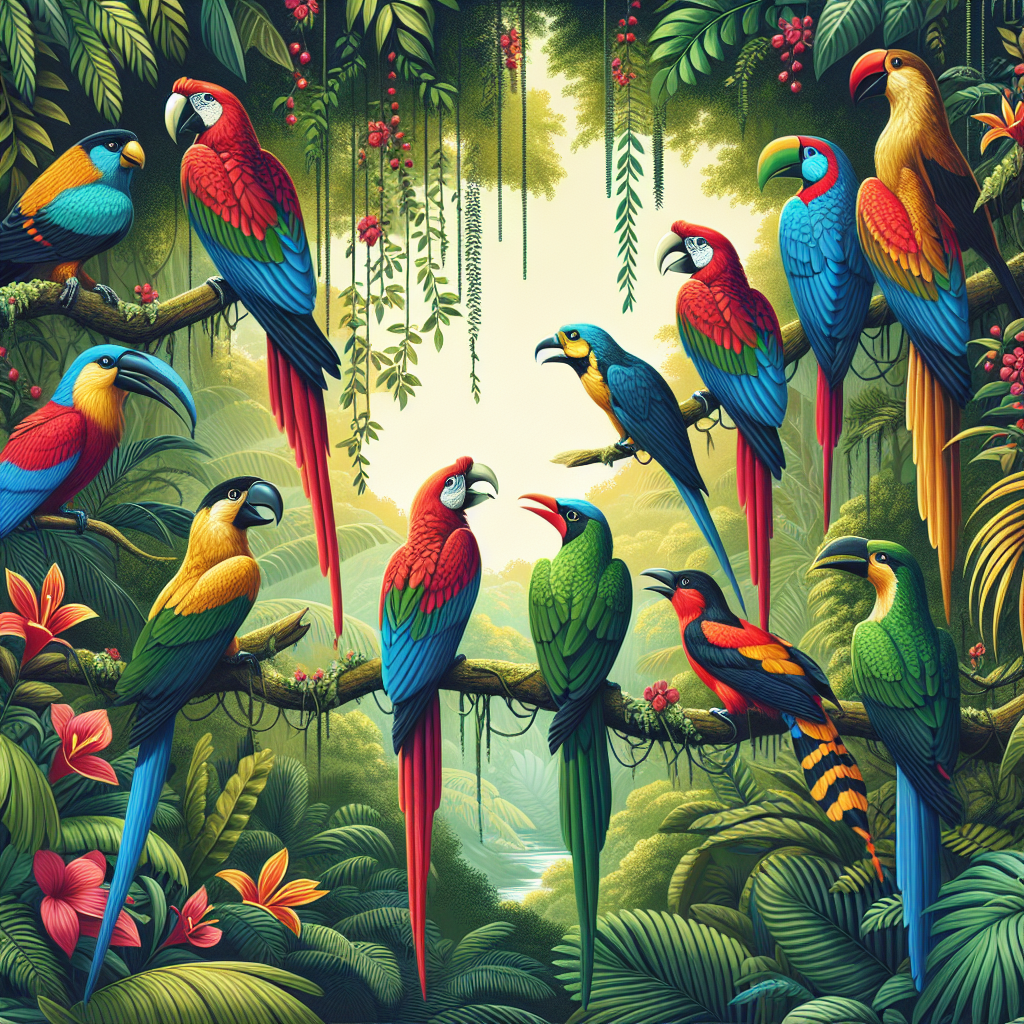Vibrant Feathers and Exotic Calls: Exploring the World of Tropical Birds

Vibrant Feathers and Exotic Calls: Exploring the World of Tropical Birds
Tropical birds are among the most stunning creatures on the planet, captivating birdwatchers and nature enthusiasts with their vibrant feathers and distinctive calls. The lush canopies of tropical forests and the vivid landscapes of tropical regions provide a perfect backdrop for these avian wonders. In this article, we will explore the unique characteristics, diverse species, and ecological significance of tropical birds, inviting readers to appreciate the beauty of these extraordinary creatures.
The Colorful World of Tropical Birds
Tropical birds are renowned for their spectacular plumage, which can range from brilliant reds and yellows to striking blues and greens. This kaleidoscope of colors is a result of both structural and pigment-based coloration. Structural coloration arises from microscopic structures in feathers that reflect light in specific ways, while pigments, such as melanin, carotenoids, and porphyrins, contribute to the bird’s overall coloration.
Among the most famous tropical birds is the Resplendent Quetzal, a Central American bird known for its iridescent green and red feathers, and its long tail feathers that can exceed two feet in length. The Scarlet Macaw, with its dazzling red, yellow, and blue plumage, is another iconic tropical avian. The unique colorations are not merely for display; they play crucial roles in mating rituals and predator avoidance, offering visual signals to attract mates and help camouflage the birds in their colorful environments.
Exotic Calls: Nature’s Symphony
Beyond their remarkable appearances, tropical birds are equally celebrated for their exotic calls, which can range from melodious tunes to raucous shrieks. The diverse range of vocalizations serves various purposes, including attracting mates, defending territory, and communicating with flock members. The Lyrebird, found in the rainforests of Australia, is particularly famous for its ability to mimic natural and artificial sounds from its environment, including chainsaws and camera shutters, which showcases the complexity and adaptability of avian communication.
Many tropical birds engage in duets and elaborate courtship displays that incorporate both visual and auditory elements. The Manakin, for instance, performs intricate dance routines while producing unique sounds through the feathers of its wings, making the male’s display a captivating spectacle. Such interactions highlight not only the beauty of the birds but also the complex social dynamics of their species.
Biodiversity Hotspots
The tropics are home to some of the most biodiverse ecosystems on Earth. Rainforests, wetlands, and tropical savannas harbor thousands of bird species, many of which are endemic to specific regions. Countries like Colombia, Brazil, Indonesia, and Madagascar rank among the richest in terms of avian diversity.
In addition to iconic species, tropical regions are also host to numerous lesser-known birds that play essential roles in their ecosystems. Hummingbirds, for example, are vital pollinators, while certain seed-eating birds contribute significantly to forest regeneration by dispersing seeds. The interdependence of these birds with their habitats underlines the importance of conserving tropical ecosystems.
Conservation Challenges
Despite their vibrant beauty, many tropical bird species face significant threats from habitat destruction, climate change, and illegal wildlife trade. Deforestation and land conversion for agriculture are among the primary drivers of habitat loss, jeopardizing the survival of countless avian species. Additionally, climate change can alter migratory patterns and breeding seasons, creating further challenges for these birds.
Conservation efforts are crucial in ensuring the survival of tropical birds. Protected areas, sustainable land-use practices, and global awareness campaigns are essential components of these efforts. Organizations like the World Wildlife Fund (WWF) and BirdLife International work tirelessly to advocate for conservation measures and engage local communities in preserving their natural habitats.
Conclusion
The world of tropical birds is a testament to the dazzling diversity of life on our planet. Their vibrant feathers and exotic calls add a splash of color and sound to the lush landscapes they inhabit. As we celebrate these remarkable creatures, let us also recognize the importance of conserving their habitats for future generations. By protecting the ecosystems that support tropical birds, we not only ensure the survival of these avian wonders but also maintain the delicate balance of nature itself. So, whether you are a seasoned birdwatcher or a casual admirer, take a moment to listen to the symphony of the tropics and appreciate the vibrant world of tropical birds.